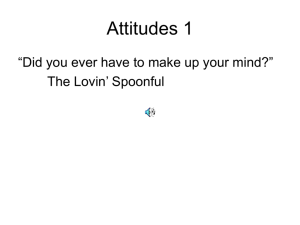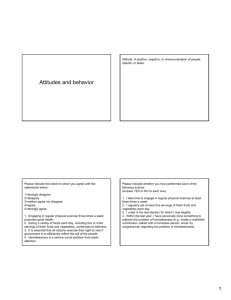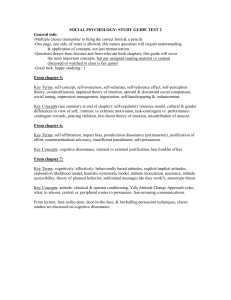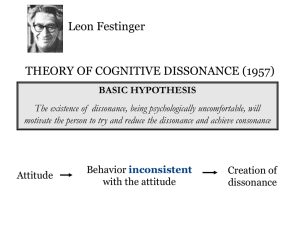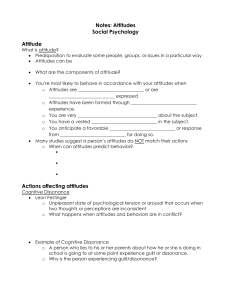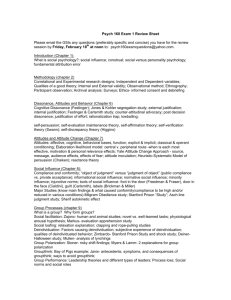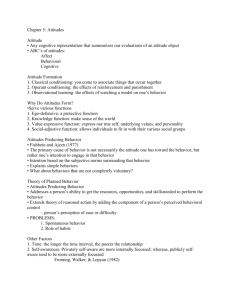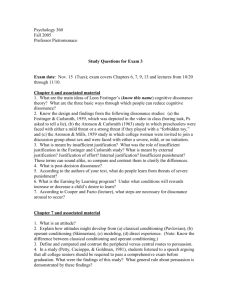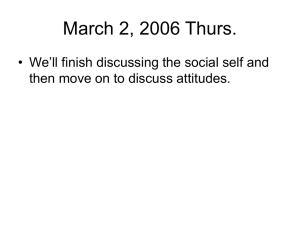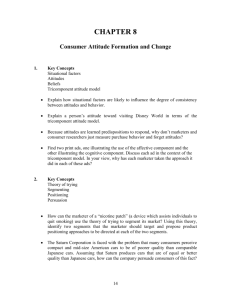What are attitudes? How do attitudes develop? Do attitudes predict
advertisement
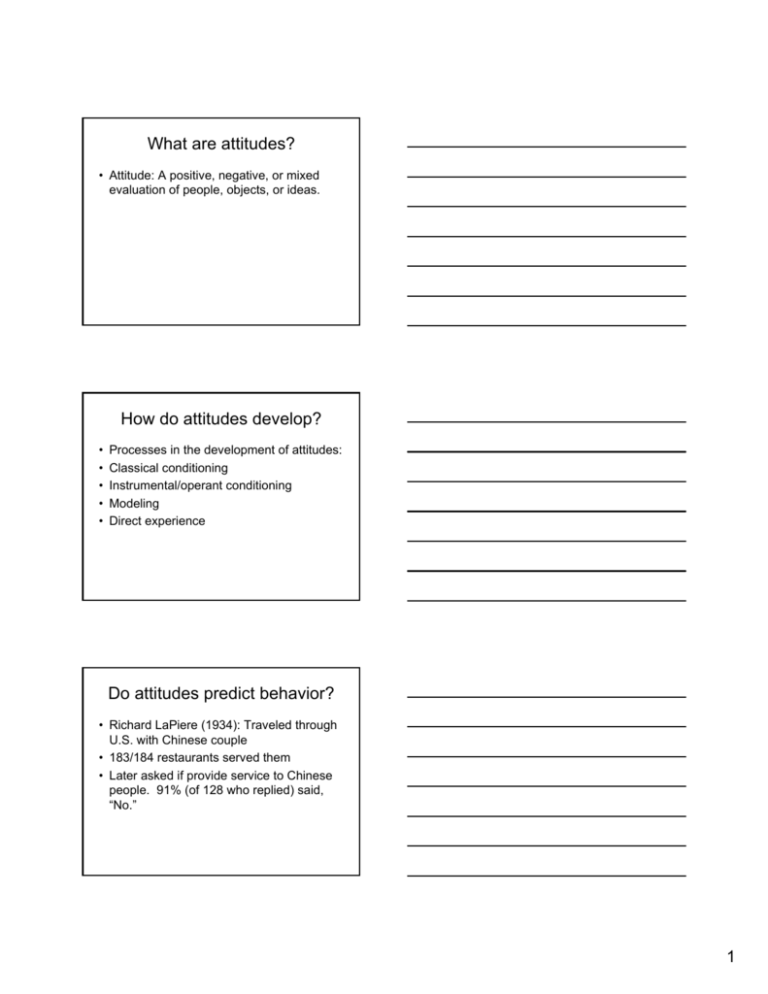
What are attitudes? • Attitude: A positive, negative, or mixed evaluation of people, objects, or ideas. How do attitudes develop? • • • • • Processes in the development of attitudes: Classical conditioning Instrumental/operant conditioning Modeling Direct experience Do attitudes predict behavior? • Richard LaPiere (1934): Traveled through U.S. with Chinese couple • 183/184 restaurants served them • Later asked if provide service to Chinese people. 91% (of 128 who replied) said, “No.” 1 When are attitudes poor predictors of behavior? • (1) Low correspondence between the attitude and the behavior (Aizen & Fishbein) • (2) Strength of attitude is weak (strength=more knowledge; based on direct experience; more important; more accessible.) When do attitudes change? • Cognitive dissonance (Leon Festinger, 1957): We feel tension (dissonance) when two of our thoughts (cognitions) are psychologically inconsistent. We change our thinking to reduce this tension. Ways to Reduce Dissonance • • TECHNIQUES Change your attitude EXAMPLES “I don’t really need to be on a diet.” • • Change your perception of the behavior • Add consonant cognitions “Chocolate mousse is very nutritious.” • • Minimize the importance of the conflict. “I don’t care if I’m overweight— life is short; mousse is great. • Reduce perceived choice. “I had no other choice; it was prepared for the occasion. “I hardly ate any mousse.” 2 • Video clip of Festinger & Carlsmith (1959) study Festinger and Carlsmith • IV: $1 or $20 to lie by saying a boring task was very interesting • DV: How much the participant reported enjoying the dull task • Results: Ps in the $1 condition said the dull task was more enjoyable than did those in the $20 condition. $1=insufficient justification for lie Importance of Festinger & Carlsmith study • Demonstrates self persuasion • Contradicted long-held belief that big rewards produced attitude change “less [money] leads to more [attitude change]” effect 3 Insufficient justification • Aronson & Carlsmith (1963) • Forbidden toy study • IV: Mild threat (I won’t like it) or severe threat (will be spanked) • DV: later liking for the toy • Results: Those faced with a mild threat liked the toy LESS than those faced with a more severe threat. Those in the mild threat group had “insufficient justification” for their behavior, and therefore internalized the attitude. Four steps to dissonance arousal (Cooper & Fazio) • The attitude discrepant behavior must produce unwanted negative consequences. • Must feel personally responsible for unpleasant consequences. • Must experience physiological arousal • Must attribute the arousal to your own inconsistent behavior Cognitive dissonance theory • Generated a lot of research • Explanations for effects are still being debated, but inconsistency appears to be important. 4 Discuss “Weapons of Influence” • How are fixed-action patterns among animals similar to some patterns in humans? How are they different? • What are the benefits and risks of automatic responding in humans? • Components of a “weapon of automatic influence” • Applications Discuss “Reciprocation” • • • • Rule for reciprocity & its importance Components of reciprocity rule Rejection-then-retreat Applications 5
